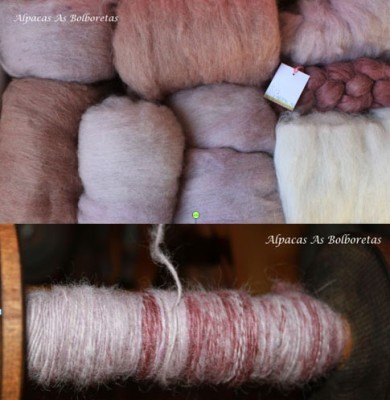 QUÉ ES LA COCHINILLA Y DE DONDE PROCEDE LA COCHINILLA DE TEXTILESNATURALES?
QUÉ ES LA COCHINILLA Y DE DONDE PROCEDE LA COCHINILLA DE TEXTILESNATURALES?
Dactylopius coccus – la cochinilla – es un pequeño insecto. La cochinilla que encuentras en nuestra tienda online es un producto nacional español, procedente de la isla de Lanzarote donde la crianza de los pequeños insectos ha sido tradicional durante generaciones de cultivadores.
Así que con la compra de nuestra cochinilla apoyas esta actividad tradicional y ayudas a apoyar las iniciativas para re-valorar este producto de excelente calidad y de origen 100% natural.
CÓMO EXTRAER EL TINTE Y TEÑIR CON COCHINILLA
Encontrarás instrucciones sencillas para extraer el tinte y teñir con lana (también sirve para seda aunque no se debe hervirla) incluidas tanto con el kit y el tinte cochinilla.
El paquete de 25g de cochinilla sirve para teñir hasta 350g de fibra. Por ejemplo, se puede teñir 75g de un tono oscuro, otros 75g más claro, y seguir tiñendo o hilos hasta agotar el baño. Con solo 10g de nuestra cochinilla es posible teñir por lo menos 50g de lana con un color fuerte.
Para teñir telas hace falta remover la tela en una olla de tamaño adecuado, evitado que se formen burbujas en el baño para que se tiñe de forma uniforme.
“!No tires la cochinilla después de realizar la primera extracción! Se puede repetir el proceso más de una vez. Entre cada extracción se puede secar y guardar la cochinilla sin problemas” – Truco de Anna Champeney Estudio Textil
FIJADORES (“mordientes”)
 Los fijadores aumentan la resistencia del tinte a la luz y a los lavados que suelen afectar a cualquier fibra, tela o prenda teñida (tanto con tintes naturales como con tintes sintéticos). El fijador para la cochinilla más común es el alumbre pero también se puede emplear sulfato de cobre y sulfato de hierro.
Los fijadores aumentan la resistencia del tinte a la luz y a los lavados que suelen afectar a cualquier fibra, tela o prenda teñida (tanto con tintes naturales como con tintes sintéticos). El fijador para la cochinilla más común es el alumbre pero también se puede emplear sulfato de cobre y sulfato de hierro.
Receta para fijadores caseros
Dejar trozos de cobre o hierro en remojo con una mezcla de agua y vinagre durante 7 – 14 días hasta que el agua coge el color del metal. Es preferible tratar la lana con el mordiente antes de teñir con la cochinilla, aclarándola bien, para no contaminar el baño de tinte.
“Mucha gente no sabe que el fijador también cambia el color obtenido – desde colores fucsia (con alumbre) hasta tonos muy atractivos de violeta (con cobre). En caso de usar el fijador de hierro es aconsejable aplicarlo después de teñir la lana, y calentar la lana con el hierro durante unos 10 minutos o hasta que se observe un cambio de tono en la lana” – Anna Champeney Estudio Textil.
¿QUÉ FIBRAS Y TELAS SIRVEN PARA EL TINTE DE COCHINILLA?
 En Textilesnaturales y Anna Champeney Estudio Textil especializamos, principalmente, en teñir hilos para emplear en tejeduría en telar. Si quieres teñir telas es importante usar una olla suficiente grande que permite que la tela se mueva libremente por el baño del tinte. Si no, no se tiñera de forma igual. Es importante usar telas lavadas, libres de grasas, aceites u otros acabos que pueden impedir la absorción del tinte.
En Textilesnaturales y Anna Champeney Estudio Textil especializamos, principalmente, en teñir hilos para emplear en tejeduría en telar. Si quieres teñir telas es importante usar una olla suficiente grande que permite que la tela se mueva libremente por el baño del tinte. Si no, no se tiñera de forma igual. Es importante usar telas lavadas, libres de grasas, aceites u otros acabos que pueden impedir la absorción del tinte.
La cochinilla da buenos resultados en fibras, materiales y telas de origen animal (lana, seda, plumas), pero los resultados en fibras y telas de origen vegetal (lino, algodón, cañamo) son mucho más pálidos y requieren procesos de fijación más complejos, por eso no aconsejamos el uso de cochinillaa para estas fibras o telas.
Las instrucciones que acompañan la cochinilla que vendemos en nuestra tienda online sirven para lana y seda pero no para telas y fibras de origen vegetal.























